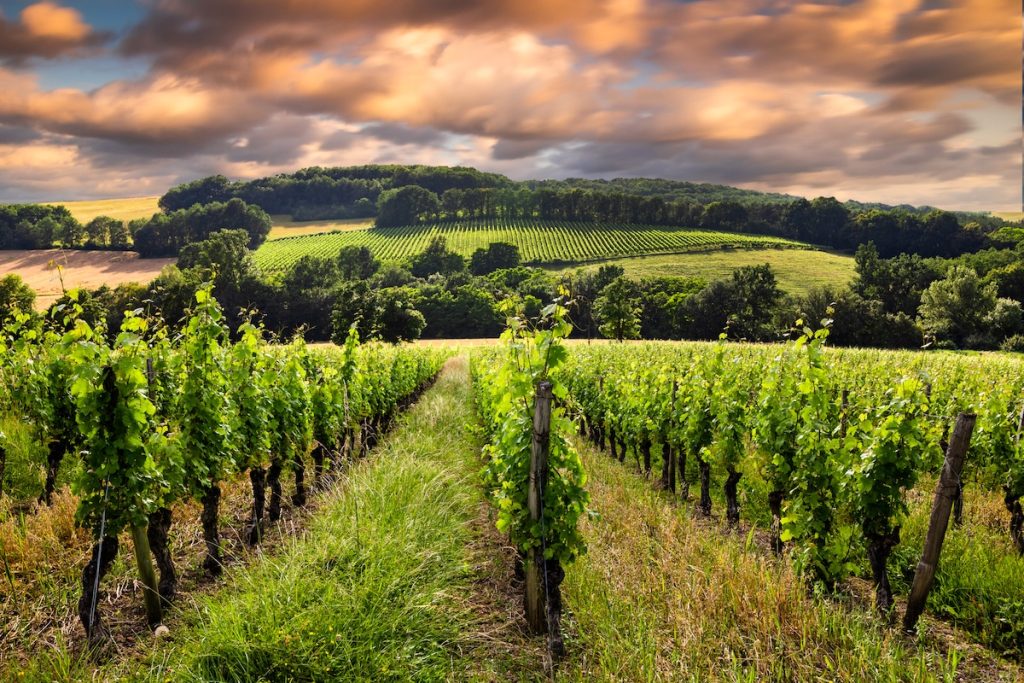Better Wine Is Made in Years With Warm Summers and Wet Winters, Research Shows
4 min read
Vineyards in Bordeaux, France. Anton Petrus / Moment / Getty Images
Founded in 2005 as an Ohio-based environmental newspaper, EcoWatch is a digital platform dedicated to publishing quality, science-based content on environmental issues, causes, and solutions.
When the quality of a particular batch of wine is exceptional, it is referred to as a “good year.” But what factors go into that designation?
A new study demonstrates the crucial role weather plays in wine quality from year to year.
In the study, a half-century’s worth of scores from wine critics in France’s Bordeaux wine region were analyzed along with each year’s weather. The researchers found that warmer years with earlier, shorter growing seasons and higher winter rainfall — conditions associated with climate change — resulted in higher quality wine.
“Weather drives wine quality and wine taste,” said Andrew Wood, lead author of the study and a graduate student in the Department of Biology at the University of Oxford, according to a press release from Cell Press. “We found evidence that temperature and precipitation effects occur throughout the year — from bud break, while the grapes are growing and maturing, during harvesting, and even overwinter when the plant is dormant.”
The same grapes grown on the same land at the same vineyard can result in varying vintage quality, even if comparable methods are used.
The study, “Seasonal weather impacts wine quality in Bordeaux,” was published in the journal iScience.
But how might climate change impact the quality of wine?
In order to investigate this question, the research team looked at the yearly wine critics’ scores and climate data for Bordeaux from 1950 to 2020, Cell Press said. The researchers analyzed wine quality at the regional and local levels, looking at both the general quality of wine within Bordeaux, as well as annual variations in quality for individual “appellations d’origine contrôlée” (AOCs). AOCs are geographical regions that use defined processes for the cultivation of grapes and wine production.
The researchers then tested for weather impacts — like season ranges and length, precipitation and temperature shifts — on wine quality using models.
Prior weather impact studies focused just on the growing season, but the new study also included the winter season, when plants are most often dormant.
“Perennial crops like grapes are there all the time, and so things that happen outside of the growing season can also impact the wine,” Wood said in the press release.
The researchers focused on the Bordeaux wine region because it relies solely on rainfall to irrigate grape vines and has an extensive record of wine scores. The team used overall regional scores of merchants from 1950 to 2020. For the individual AOCs, they looked at wine critic scores starting in 2014 and going up to 2020.
Critics tasting the wines know their origins, so it is subjective. But since most wine critics agree on what makes a “good” or “bad” wine, the study’s authors said quality is “a non-subjective property of perennial crops,” so it could be used for monitoring how they change in the long run.
The research team found that wine quality scores in Bordeaux had a tendency to improve from 1950 to 2020, which could be because the region’s climate warmed during that time. Another reason for the improvement could have been the increased use of technology employed in winemaking or the fact that winemakers had a tendency to match their techniques more and more to what the consumer wanted.
“The trend, whether that’s driven by the preferences of wine critics or the general population, is that people generally prefer stronger wines which age for longer and give you richer, more intense flavors, higher sweetness, and lower acidity,” Wood said. “And with climate change — generally, we are seeing a trend across the world that with greater warming, wines are getting stronger.”
The researchers also found that weather affected the quality of wine all year round, not only during the growing season. High-quality wines were generally associated with winters that were wetter and cooler; springs that were wetter and warmer; dry, hot summers; and autumns that were cool and dry.
Because climate change is bringing weather patterns like those to Bordeaux, the research team predicts that its wine will likely continue to increase in quality with the progression of climate change.
“With the predicted climates of the future, given that we are more likely to see these patterns of warmer weather and less rainfall during the summer and more rainfall during the winter, the wines are likely to continue to get better into the future,” Wood said in the press release.
But this only holds true until water becomes scarce.
“The problem in scenarios where it gets really hot is water: if plants don’t have enough, they eventually fail, and when they fail, you lose everything,” Wood said. “But the general idea or consensus is that the wines will continue to get better up to the point where they fail.”
The researchers said their methods could be used to examine the impacts of climate change and annual weather variations on other wine regions, as well as on other perennial crops like coffee and cocoa, as long as there are long-term quality records to accompany the analysis.
Subscribe to get exclusive updates in our daily newsletter!
By signing up, you agree to the Terms of Use and Privacy Policy & to receive electronic communications from EcoWatch Media Group, which may include marketing promotions, advertisements and sponsored content.





